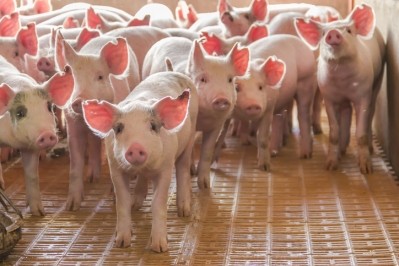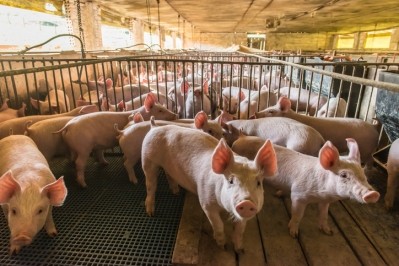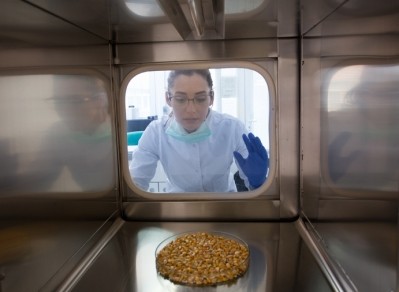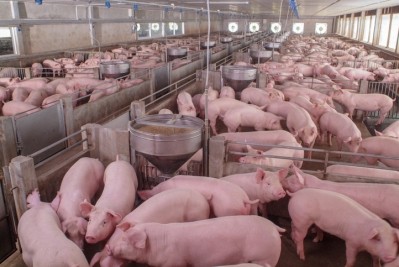How to produce pigs without using a high level of zinc oxide
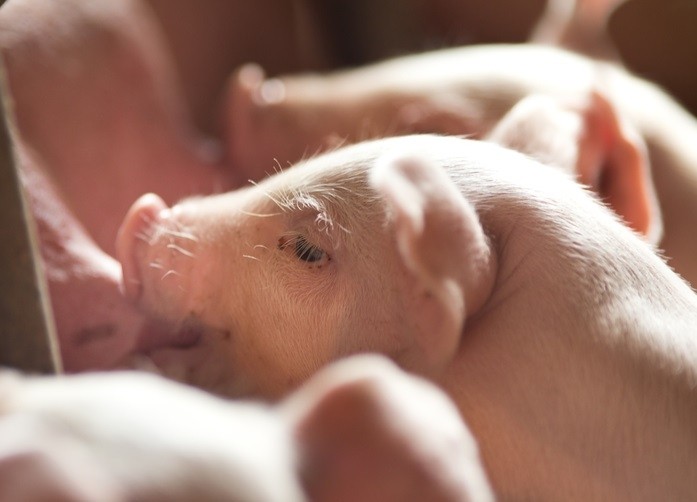
The event was timely given that the EU will see a ban on the use of pharmacological levels of ZnO in nursery pigs from June 2022.
Novus talked about a trial it ran where piglets were given feed supplemented with Zn from Zn methionine hydroxy analogue chelate (Mintrex Zn trace minerals from Novus), which it said is a highly bioavailable source; the company said the results indicated its product could be an alternative to pharmacological levels of ZnO in a nursery feeding program.
Feed Navigator had a Q&A with Novus research scientist, Dr Ping Ren, to hear more.
First off, we asked him, besides Europe, where else Novus sees regulatory pressure occurring regarding a reduction or prohibition of ZnO in pig feed.
“Because of the concerns - environmental contamination and antimicrobial resistance of bacteria from using high levels of ZnO - restrictions on ZnO usage in post-weaning piglets is getting more and more attention across the globe.
“[Following the EU developments], in July 2018, China restricted the use of ZnO to 1600 ppm in the first two weeks post-weaning. It is believed that, in the near future, other world areas will also follow the same pattern as the EU and China.”
The study
Ren said the trial was conducted on Novus’s research farm:
“We used 288 weaning barrows, which was randomly allotted to 1 of 4 dietary treatments, with 12 replicates per treatment and four pigs per replicate. The dietary treatments were arranged using 2 × 2 factorial design, with two zinc sources and two phytase levels. The two zinc sources were ZnO and our Mintrex Zn trace minerals."
ZnO was supplemented at 2000 ppm Zn in phase 1 and 2, and 100 ppm in phase 3, to reflect commercial practice, and Mintrex Zn was supplemented at 100 ppm through the entire nursery period, he said.
“The two phytase levels were 0 and 500 FTU/kg. We looked at the growth performance in each phase and for the entire period. We also recorded fecal scores in each pen during the nursery period using a 5-scale system and mortality rate. We collected fecal samples at the end of phase 2 to measure calcium and phosphorus digestibility. We also collected small intestine samples at the end of the study to conduct the morphometry measurements.
“Through the growth performance, fecal score, and mortality rate data, we could determine if using 100 ppm zinc as Mintrex Zn could replace 2000 ppm zinc as ZnO in nursery pigs. The calcium/phosphorus digestibility and gut morphology data could help us understand the modes of actions of these two nutrition strategies.”
Findings
In outlining the main takeaways for industry from the Novus research, Ren said the team saw that the beneficial effect of pharmacological level of ZnO was only realized in the first two weeks post-weaning compared to the low level of Mintrex Zn. He said they observed that pigs fed diets containing 100 ppm zinc as Mintrex Zn had similar average daily growth but tended to have greater gain-to-feed ratio in phase 2 compared with pigs fed diets containing 2000 ppm zinc as ZnO. In the third phase and through the entire nursery period, there was no difference between the two zinc strategies, he added.
“One interesting thing we see from this study is that pigs fed Mintrex Zn tended to have less villus width at ileum compared with those fed ZnO, indicating that Mintrex Zn could reduce gut inflammation.
“Another important finding from this study is that pigs fed diets containing 100 ppm zinc as Mintrex Zn had greater calcium and phosphorus digestibility regardless of 500 FTU/kg phytase inclusion, compared with those fed diets containing 2000 ppm zinc as ZnO. This result further illustrates that supplementation of Mintrex Zn at 100 ppm zinc could improve phytase efficacy on calcium and phosphorus digestibility.
“We did not observe a difference between the two zinc strategies in terms of fecal scores, but Mintrex Zn seemed to have lower mortality rate compared with ZnO.”
Overall, the results from this study, he said, support that Mintrex Zn supplementation at 100 ppm zinc could replace 2000 ppm zinc as ZnO in nursery feeding program, likely due to enhanced gut morphology and improvement in calcium and phosphorus digestibility.
FeedNavigator is hosting a webinar on July 11 2019 on what the viable and practical alternatives are to the use of zinc oxide in pig rations.
Register for the free online event now!
Our speakers will include Lisbeth Shooter, who is a senior manager in SEGES, the pig research center in Denmark; she has overall responsibility for coordinating the pig innovation activities, and manages the feed efficiency team at the center. Lisbeth has good awareness of other pig markets having spent seven years in England working for BPEX, now AHDB Pork, advising pig producers in that market.
She will tell us about some of the research work undertaken at SEGES on alternative feed ingredients in terms of zinc oxide free diets.
We will also be joined by Alfons Jansman, the well-respected senior scientist at Wageningen Livestock Research, in the Netherlands; his areas of focus are digestive physiology in pigs, amino acid requirements and metabolism, and nutrition and health in pigs and poultry.
He will discuss post-weaning feeding strategies, such as reduced protein in weaner diets when medicinal zinc is removed, the impact of the cereal type and starch source used in piglet feeds, and the importance of sow feeding to encourage a higher milk yield and wean more uniform pigs.
Don’t miss out. Sign up for this timely webinar now!
Charlotte Lauridsen, head of research, immunology and microbiology, in the Department of Animal Science, at Aarhus University in Denmark, will also be on our panel. Her research activities primarily concern the nutrition and physiology of farmed animals with a focus on understanding the benefits of vitamins, lipids, fatty acids, natural and synthetic antioxidants and selected minerals and feed additives for monogastric animal liveability, health, reproduction, nutrient utilization and product quality.
She will report on the role certain feed additives can play in reducing the occurrence of post-weaning diarrhea when zinc oxide is removed from the piglet diet.
Next steps
We asked Ren whether the results could be extrapolated to commercial pig production conditions considering the Novus study was carried out in a research farm:
“The results from this study are really encouraging. As with most research done in initial stages of discovery and learning, the controlled environment wherein this study was conducted offered fewer challenges than may be found in commercial production. Despite that, we would expect to see very similar results on a commercial farm.
“Our next steps with this research are to replicate the study on an even larger scale and explore not only the benefits of Mintrex Zn but also it in combination with other products to replace ZnO fully. As we fine tune the research even further, we will continue to refine the recommendations for producers looking to replace some or all of the ZnO they are using with Mintrex Zn.”
In terms of the elements that make the Novus product highly bioavailable, he said that it was a true chelate and had a very clear chemistry structure that was determined by crystallography.
“Each Mintrex Zn molecule is composed of two HMTBa molecules that chelated with one zinc metal through the coordinate covalent bonds, which results in zinc in the middle of two heterocyclic rings. This unique structure guarantees Mintrex Zn is more stable in the digestive tract, especially in the acidic condition of stomach. Because of its unique structure, there is less interaction between the zinc in Mintrex Zn with antinutrient factors in the diet, such as phytate, therefore more zinc can be delivered to absorption site.”
Looking at the environmental impact of Novus’s replacement zinc product, Ren said that, in their study, they found that supplementation of 100 ppm zinc as Mintrex Zn in the diet led to 13 times less zinc concentration in the feces compared with supplementation of 2000 ppm zinc as ZnO.
“This indicates that supplementation of Mintrex Zn could minimize the environmental impact and may also reduce antimicrobial resistance of the bacteria.”

